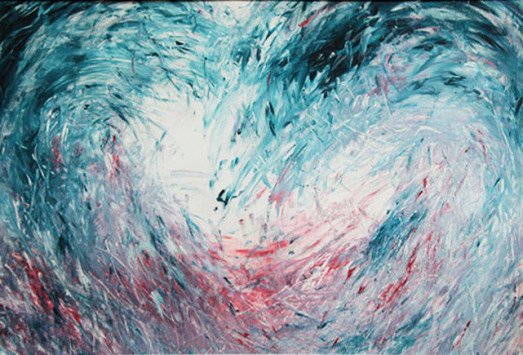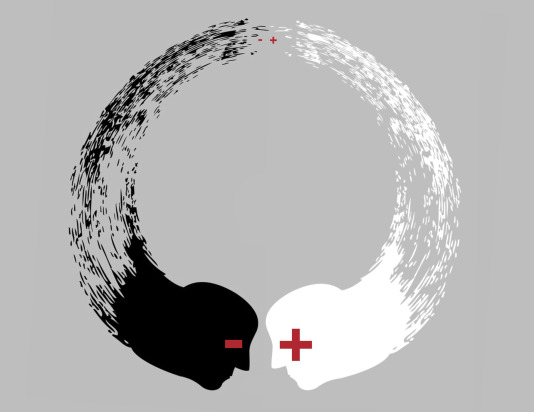
Crises like climate change, resource depletion, mass migration, social inequality, the possibility of nuclear war are endangering us like never before. Yet it seems we have no collective capacity to deal with them. We’re mired in increasing polarisation and in our age-old human habit of taking sides and fighting for the thing we believe in until we end up as victors or the vanquished.
However our lack of clarity in understanding the devastation that arises from rigidly taking sides and getting stuck in narrow positions and identities is arguably the biggest crisis we’re facing, our most fundamental human pathology. We’re facing a challenge that now demands we transition to a more collaborative mindset. If we want to survive as a species on this planet we need to learn how to deal with conflict.
I’m engaged in a project that seeks to address this deficit by showing how we can attend to basic human dynamics in ways that will improve literally everything: from our inner wellbeing and interpersonal relationships to national and international politics. At the article’s end I’ll tell you more about this project and how you can help. But first I’d like to take us on a brief journey of how we can harness the awesome potential of conflict…
“Peace is conflict done well.” Brandon WilliamsCraig

Let’s face it, life in all of its dimensions is made up of all kinds of outer situations and inner occurrences and experiences that are beyond our control. We can hold on to a particular idea of how things should be and then something or somebody comes along and contradicts our view, blocks our way or disrupts our peace.
Nobody and no-thing can escape the reality of conflictual disturbance. It shapes our destiny and that of the people and the world around us at every level. So if we look at the etymology of the word conflict, (from the Oxford dictionary) we discover this notion of “striking together”:

If we are true to what naturally motivates us and allow those impulses to develop and express themselves, at some point we inevitably come up against someone else with a conflicting expression. Perhaps they even inhabit the polar opposite of how we see things. This evidently produces a striking clash of forces. If we remain attentive to that without shutting down we’ll experience the (uncomfortable) energy of dissonance.

Given the universal principle that energy can neither be created nor destroyed, only transformed from one form to another, this dissonance has to find an outlet. Whether the situation is internal dilemma or an outer conflict with others there are four possible unsatisfactory outcomes and only one which is fully wholesome and satisfactory.
Here they are:
1) Getting locked into ongoing combat and stalemate (requiring effort, often resources and strife.)
2) One side/view/tendency wins and the other loses. The dynamics of collapsing or overpowering are at play here. The winner feels great in the short-term but sets in motion a feedback process which will have future consequences: resentment, a will for revenge, undermining and future defeat are examples.
3) Avoidance or suppression of the other side or issue. In this case the opposing force will over time wear down and hamper the activity and wellbeing of the suppressing or avoiding force.
4) Compromise. This is when both sides settle for less than they want. Not finding the full expression of desires leads to outcomes such as resentment, mediocrity and future struggle.
5) Generative/ Transformative/ Win/Win solutions. Both (or all) sides seek their full expression which creates dissonance but by staying in connection and dialogue previously unknown possibilities eventually emerge. The tension of conflict here results in creativity rather than regression or destruction. The emerging solution is holistic and satisfactory to all sides as it emerged out of their mutual committed interaction.
“Conflict is resolved not through compromise, but through invention.”
~ Mary Parker Follett
The art of facilitating and enabling things to unfold and express themselves is key in creating such synergistic outcomes. By learning to embrace the movement of competing forces and by harnessing the potent energy of conflict, harmonious outcomes can be achieved. People and groups that thought of themselves as enemies can find themselves transformed by this kind of encounter and are able to work towards common goals.

The point I’d like to make is that collectively we already possess the knowledge to do this transformative work. Although they may not always be straightforward to implement humanity now has all the tools needed to transform conflict at internal, relational and political levels. For example tried and tested facilitation methods exist that effectively help groups of opposing viewpoints to synergise their differences and work together.
In these times of increasingly destructive polarisation it is vital to spread this knowledge. I am about to start work on a new website that highlights how we can move beyond our siloed and fragmented culture into a more collaborative one that is built on human diversity. This is not wishy-washy utopianism, it’s very real and is based on things that are already happening worldwide.
I’ll be creating it in collaboration with Tom Atlee and the Wise Democracy Project. Tom has been researching and writing about these principles for the past 30 years and has recently created a ‘pattern language’ where you can delve into detailed explorations of elements touched upon in this article e.g Using disturbance and diversity creatively, Metabolising Polarisation and Generating Shared Orientations.
You can help with this project by sharing stories. How have you dealt with conflict? Do you have stories of times when it felt like you were in an intractable conflict but you found a transformative solution that satisfied everyone? Are you a mediator, facilitator or community organiser that has witnessed group breakthroughs? Or have you seen political settlements between enemies that have forged win/win scenarios?
I’ll be doing interviews and writing articles. I’d love to hear from you.
Andy Paice is London based Coach, Facilitator and Mindfulness trainer. The focus of his work/play is facilitating and catalysing new ways of working and living that are fit for the realities of the 21st century. One of his major passions is the creation of participatory democracy initiatives and amplifying awareness of new politics through the
Reinventing Democracy YouTube channel . He teaches Mindfulness in community and corporate settings and facilitates community meetings. Andy is passionate about authentic human connection and the emerging collaborative commons paradigm. Prior to these activities he lived and practised as a monastic in the Tibetan Buddhist tradition in France from 1998-2007 where he accomplished a traditional three-year group meditation retreat. In his spare time he enjoys Contact Improvisation dancing, eating curry and running From Me to We a meetup group he created. You can check out his website www.andypaice.net and follow him on Twitter @andypaice


























